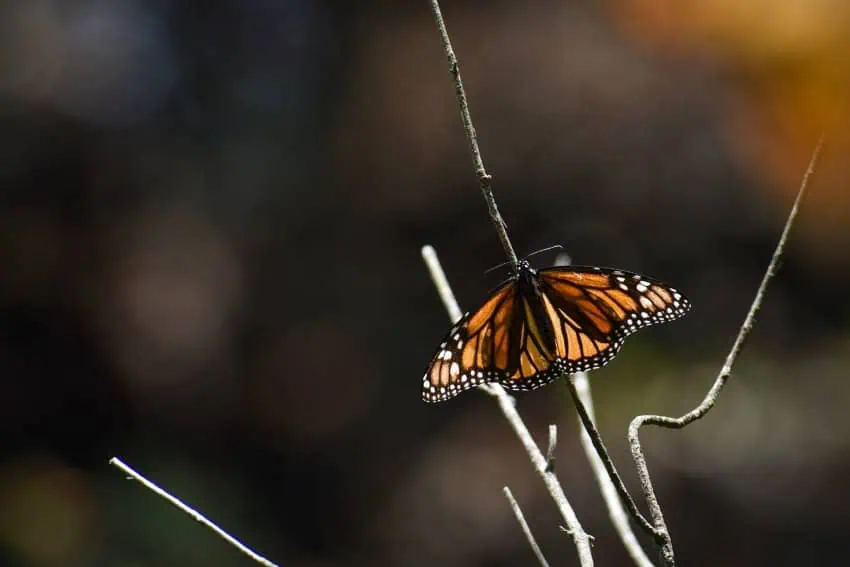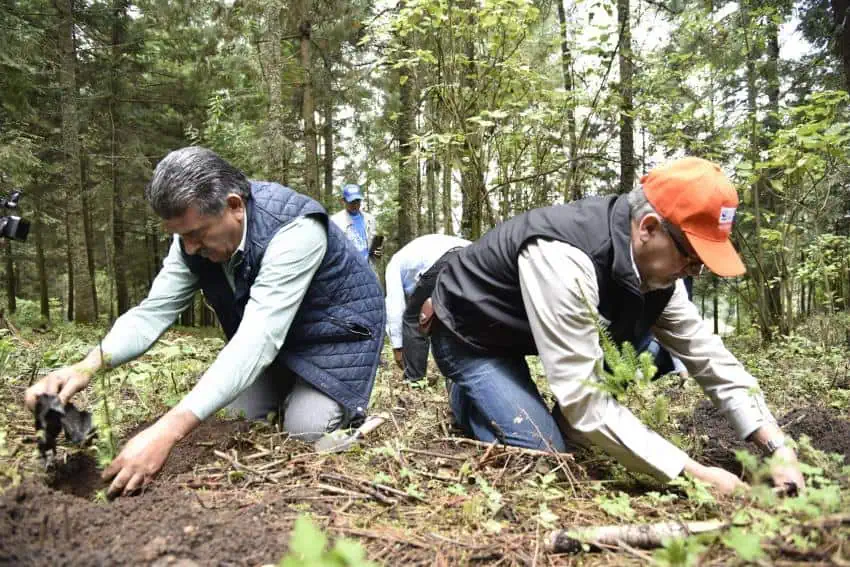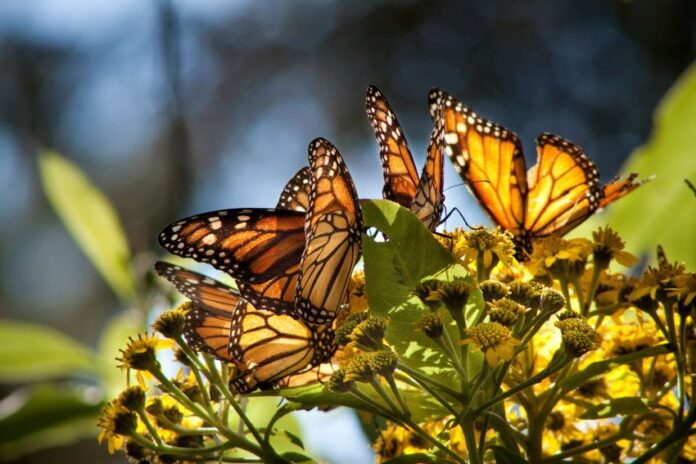The late arrival of the annual monarch butterfly migration in mid-November raised concerns among the residents of Ejido El Rosario, Michoacán, and its surrounding areas. However, their numbers have been a pleasant surprise, with more butterflies arriving this year than last, according to the caretakers of their main habitat in Mexico.
Michoacán is home to the world-famous Monarch Butterfly Biosphere Reserve, which spans over 562 square kilometers (also including parts of México state). Recognized as a UNESCO World Heritage Site, the reserve annually welcomes millions of butterflies that migrate from the northern United States and southern Canada to nest in Mexico’s pine and fir forests.

“[The butterflies] arrived several days later than usual. But there are more butterflies this year than the last,” Abel Cruz Reséndiz, manager of El Campanario sanctuary in the Rosario Ejido, located in the municipality of Ocampo, told the newspaper La Jornada.
Close to 50% of all the butterflies that migrate to Michoacán congregate in the El Campanario sanctuary.
According to Cruz, there are about 50 million butterflies in the reserve now. While this figure is more than the one registered in 2023, it is less than in 2022.
“This confirms that the migration of the monarchs has fluctuations,” Reséndiz said.
In November 2022, some 90 million monarchs arrived in the fir forests of El Campanario Hill. A year later, the population dropped to almost half.
In good seasons, Michoacán’s Ejido El Rosario has seen over 100 million butterflies.

However, there have been challenging seasons like the one recorded in 2016, when a snowfall led to the death of millions of butterflies. The monarch population took two years to recover.
Cruz noted that Michoacán is working to protect the monarch butterfly and restore its habitat, including planting nearly 200 hectares of fir and pine.
“We continually monitor the butterfly’s core area,” he told La Jornada. “The main threat lies along the migration route the butterfly takes from the northern continent, particularly through agricultural areas, where insecticides kill millions of butterflies.”
Governor of Michoacán Alfredo Ramírez Bedolla said that this year marks half a century since the Monarch Butterfly Biosphere Reserve began to receive national and international tourists. To celebrate, the monarch butterfly will be included in the state’s official promotional materials, he said.
According to many experts, climate change is gradually changing the ecosystems of Mexico’s forests, putting the monarch’s habitat under threat from increasingly severe temperature changes, droughts and the emergence of pests. Some models predict that the climate habitat suitable for monarchs in the existing Monarch Reserve could disappear by 2090.
A group of scientists and conservationists is already collaborating to move fir seedlings to higher and colder areas in the region and create new butterfly habitats. The team aims to establish healthy trees in these areas by 2060.
With reports from La Jornada.
